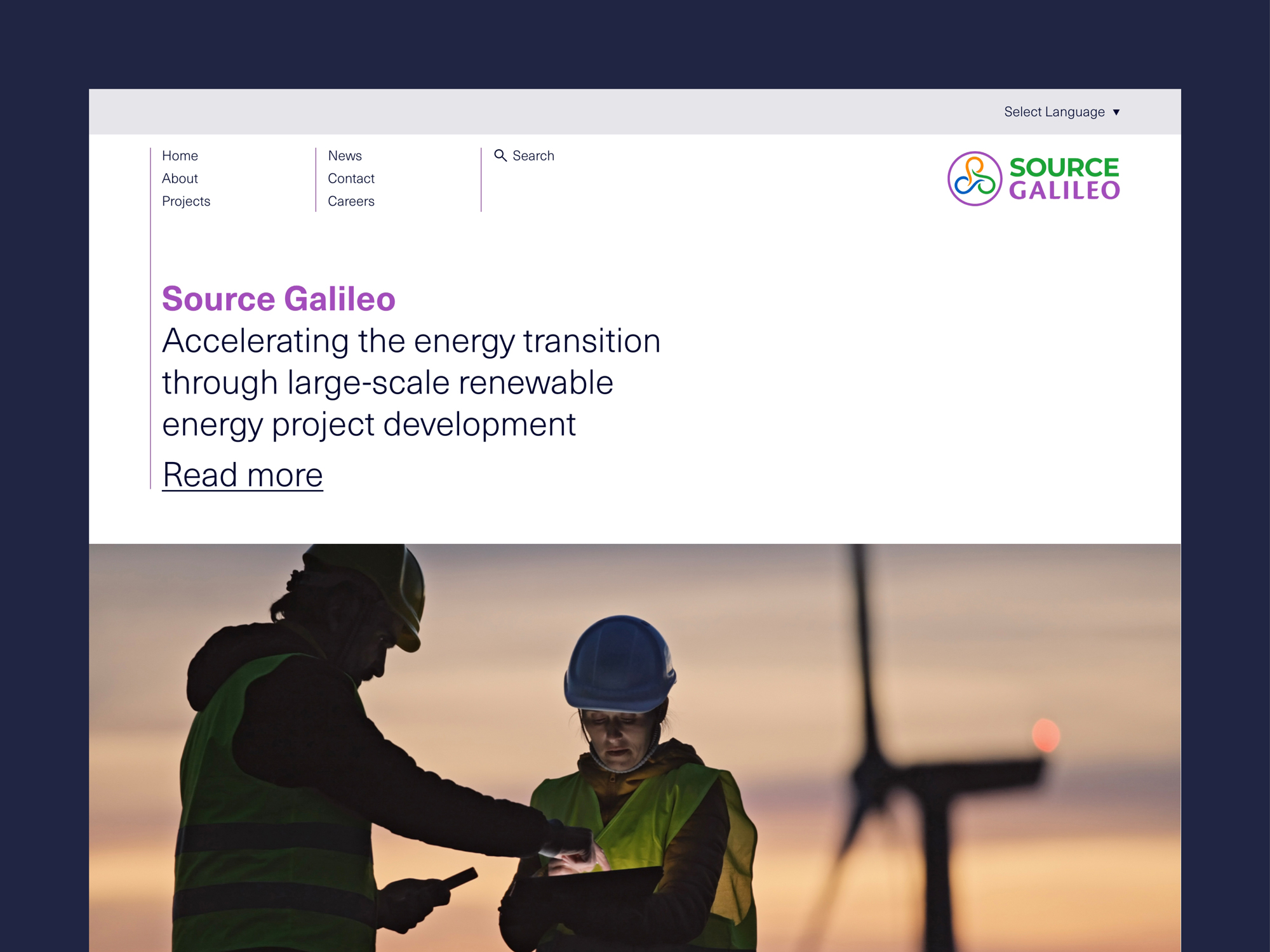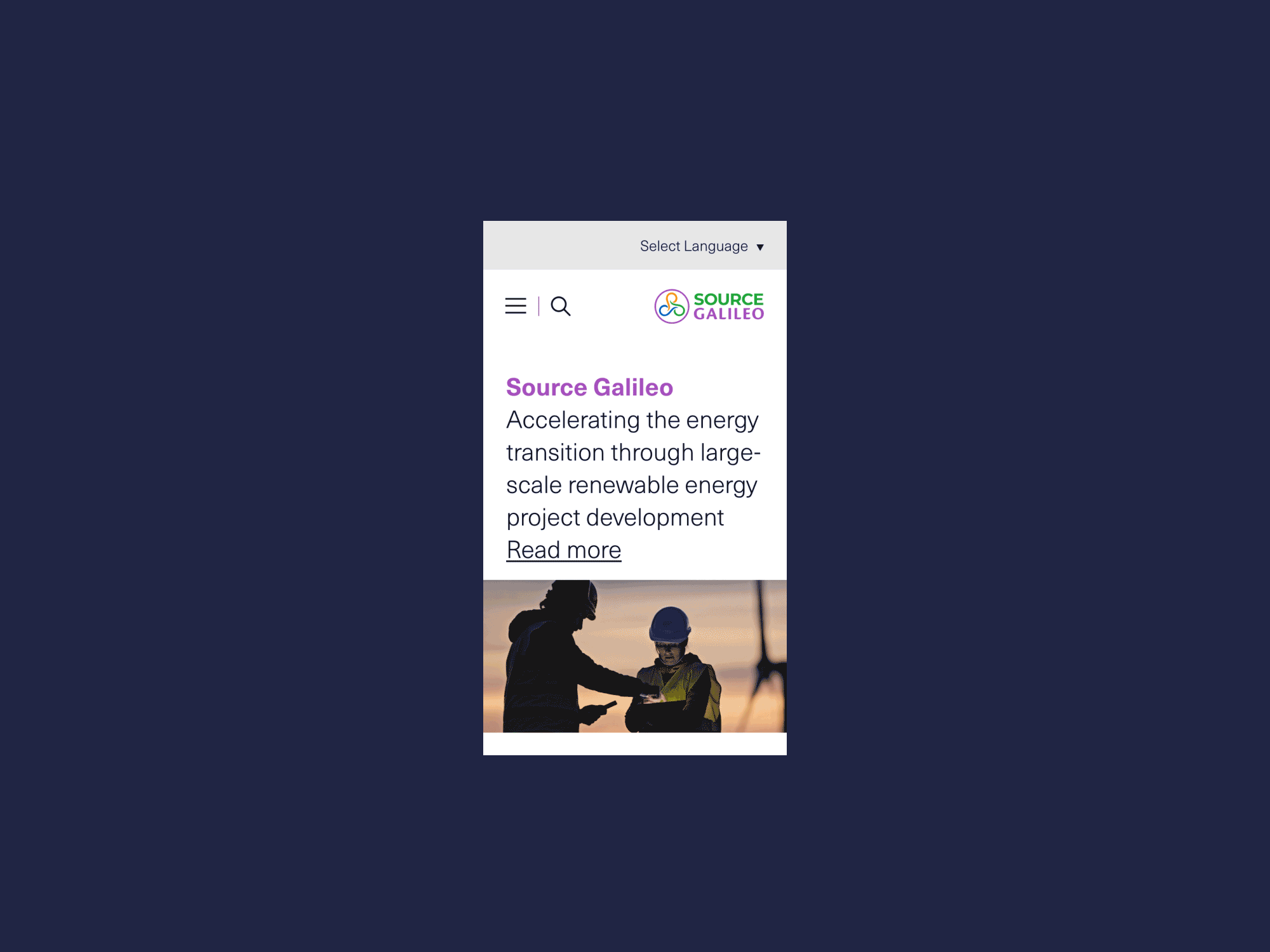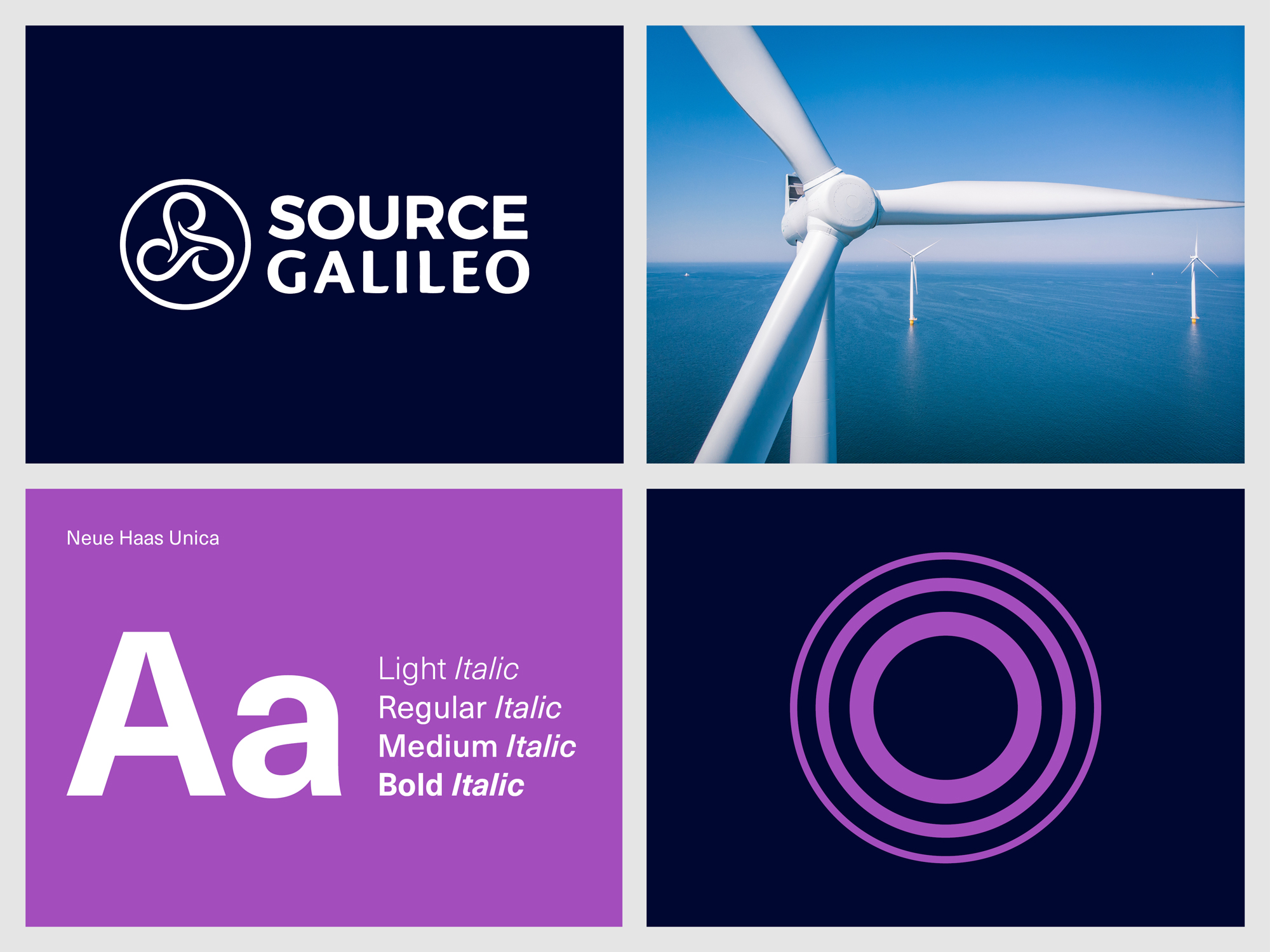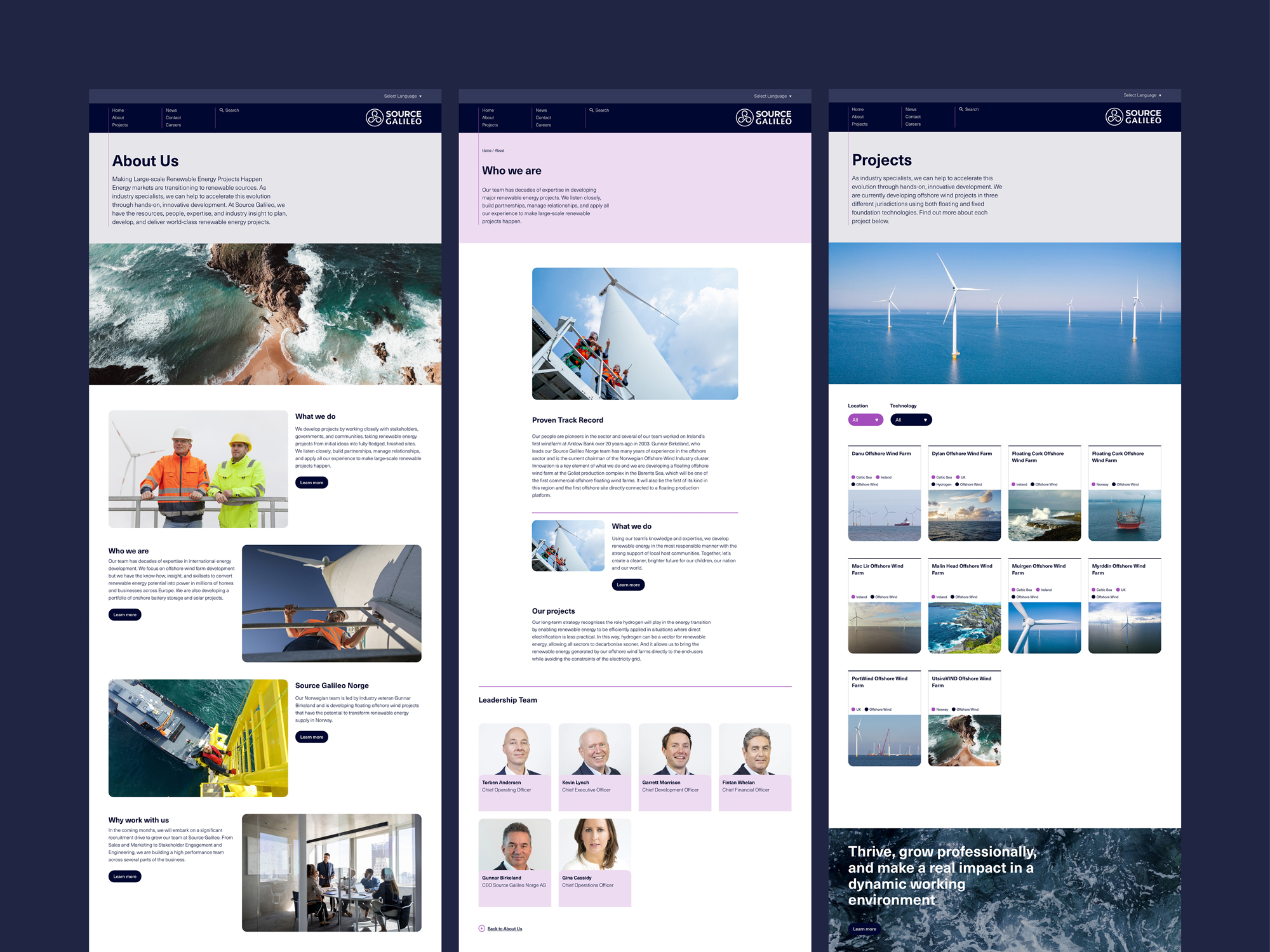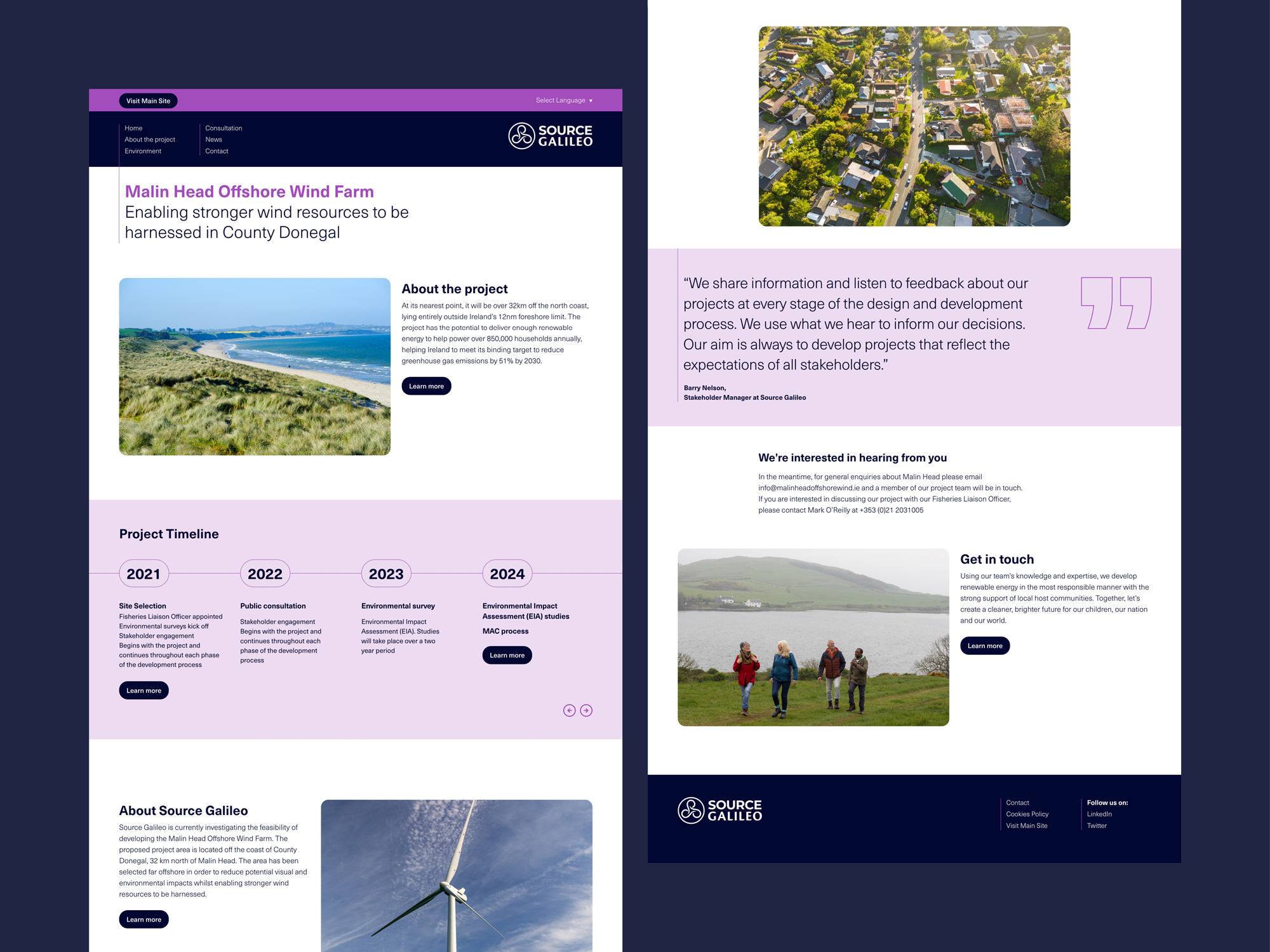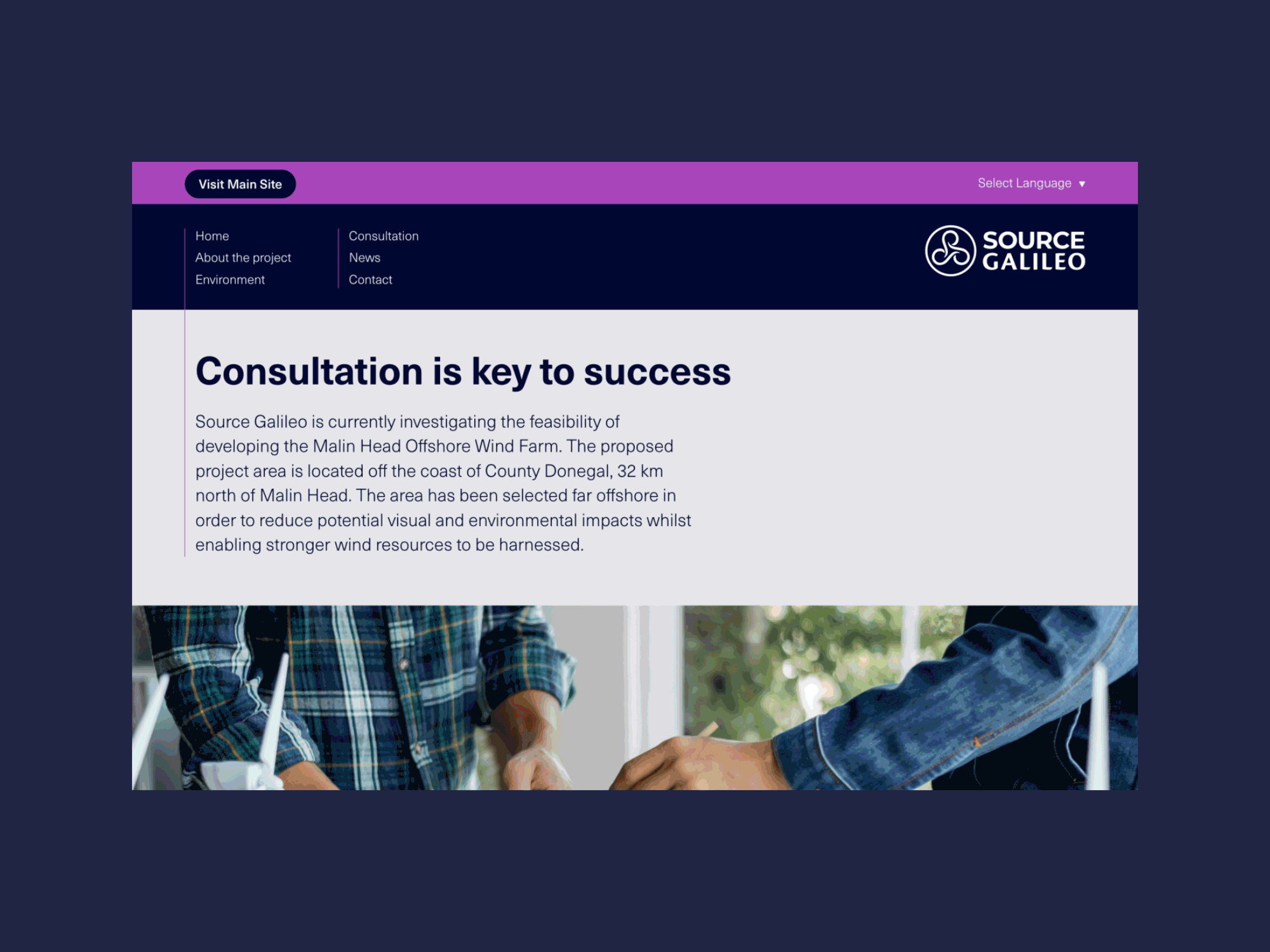Source Galileo Website
2023
Designed by Conor Buckley, Victoria Brunetta and Conor Smyth at Piquant Media
Head of Development: Pawel Bogucki
Frontend Developer: Amy O’Shea
Categories: Website
Industry: Commercial
Tags: Digital / Science / System
Website: sourcegalileo.com/
Source Galileo specialises in the development of large-scale sustainable energy infrastructure projects across multiple jurisdictions.
They work closely with stakeholders, governments, and communities, taking renewable energy projects from initial ideas into fully fledged, finished sites. As a rapidly growing company with expanding digital needs, Source Galileo needed a multi-site platform built on a scalable architecture that can respond to its changing news
In crafting a new website, we aimed to serve two distinct end user types, 1. those interested in Source Galileo and their offering and 2. those interested in specific projects that Source Galileo are undertaking. To address both audiences we structured the website as a core site with a number of sub project node sites.
This node site substructure allows each project to exist as its own standalone website with a unique domain and tailored specific news section and project information block and timeline.
This allows Source Galileo to present project specific content clearly and cohesively to multiple defined project audiences.
We designed the core site to serve content that illustrates a wider overview of the capacity and business and brand offering. including the listing of the project node sites as case studies.
We designed consistent navigation across all sites that allow users to easily navigate through the content in an effortless way.
For the content management system, we opted for Drupal 10. The key strengths lay in its open-source nature and the scalability inherent in its atomic design, particularly beneficial for handling vast amounts of content and integrating add ons seamlessly.
Our approach involved the development of a multi-site platform, allowing the deployment of numerous node sites. These sites inherit atomic modules and styling from the core site, resulting in an efficient and cohesive management of multiple node sites. This not only streamlines the delivery process but also ensures a unified front-end user experience.
We developed a multi-input translation functionality. This feature facilitates both automated Google translations and professional editorial translations, ensuring that the content is accessible and understandable to identified audiences.
The website was developed to meet WCAG 2.1 AA standards, placing a strong emphasis on accessibility. Through an accessible front-end design and markup methodology, we ensured that users with diverse abilities can navigate and comprehend content effortlessly. In addition, we revamped the brand colour palette to align with accessibility contrast guidelines. This commitment guarantees an inclusive and user-friendly experience for all visitors, aligning with the highest accessibility standards.
The newly launched website has revolutionised how Source Galileo engages with project stakeholders. With each project now having its independent site, acting as a dedicated dashboard, the platform greatly enhances opportunities for transparent communication and engagement, particularly during critical project stages.
Given Source Galileo's dynamic development cycle, which often demands tailored content and pages, the use of atomic website modules empowers the team to rapidly build, test, and deploy custom and professional content arrangements with remarkable speed and efficiency.
Furthermore, the website maintains its commitment to top-tier accessibility and speed standards, ensuring an optimal user experience for all visitors.
